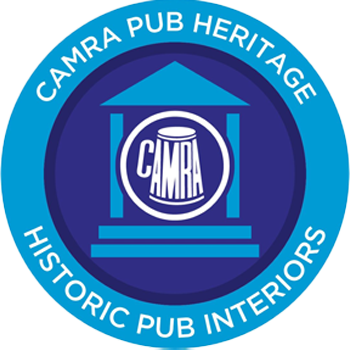This website is currently in beta. If you wish to go back to the current site please click here. To provide feedback or find out more about this site, please click here.


Let us know your thoughts by leaving a score
Known locally as The Goth, this is a superb example of a Gothenburg pub. The bar has a magnificent painted ceiling, whilst the walls throughout are covered in murals and paintings depicting past local life. However it is the fine island bar that impresses most. The in-house microbrewery can be viewed from the bar and it is hoped it will return to operation during 2024. Meals are only served in the restaurant.
Three star - A pub interior of outstanding national historic importance
Listed status: B
This superb pub was built in 1908 for the East of Scotland Public Houses Trust, in Arts and Crafts style. It was sold to the London-based Trust Houses Ltd in 1919 and, after a chequered late 20th-century history, reopened following meticulous restoration in 2003 which won that year’s CAMRA national conservation award. The public bar is a magnificent room with superbly designed features – low segmental arches at the sides, wall panelling and rich green Art Nouveau tiling. It has a servery in the centre which would form an island but for the tiny jug bar which joins it to the front entrance. To the left is an elegantly panelled lounge/café where the emphasis is on dining rather than drinking. A tiled spiral staircase leads to the upper floor where the historic features are limited to two fine fireplaces. The building has been extended at the rear to include a small brewery (opened 2004). The name comes from the Gothenburg System – still operating here – which originated in the Swedish city in 1865 to encourage temperance. Managers gained no benefit from alcohol sales but did so from food and non-alcoholic drinks. Profits above a certain percentage (usually 5%, as here) were devoted to projects for the benefit of the community. Here they go to the Prestoungrange Arts Festival which has funded the wall and ceiling paintings at the pub and other art works in the community.
This pub is of great importance both for its superb Edwardian fittings and because it is run along Gothenburg lines. It was built in 1908 of red sandstone for the East of Scotland Public Houses Trust in Arts and Crafts style and still retains its original interior. The pub was sold to the London-based Trust Houses Ltd in 1919 and then in 1965 to Bass and operated as a conventional commercial pub. By the mid-1990s it was failing, and in 2001 it was closed but passed into the hands of the present enlightened ownership. After meticulously restoration, it re-opened in 2003 and won the CAMRA national conservation award for the quality of the work. The public bar is a wonderful room with superbly designed features â low, segmental arches at the sides with vertical struts, deep green tiles, panelling and a spectacular jug bar. The latter involves a tiny cubicle (with a seat on the right) in front of the entrance lobby and includes woodwork of considerable intricacy.
To the left is an elegantly panelled lounge used mainly for food and non-alcoholic refreshments. Since 2001 the building has been extended at the rear to include a small brewery (opened May 2004). There are further rooms upstairs all with modern fittings. The Gothenburg system originated in the Swedish city in 1865 as a means of encouraging temperance. A key principle was that managers gained no benefit from alcohol sales but did so from food and non-alcoholic drinks. Profits above a certain percentage (usually 5%, as here) were devoted to projects for the benefit of the community.
This Pub serves 1 changing beer and 0 regular beers.
Prestoungrange Gothenburg, Prestonpans
Feb 2023 - 2 pumps temporarily out of action. Real ale range has yet to be decided.
Changing beers typically include: Born (varies) , Winton (varies)
Introduction This guide describes the 116 pubs identified by CAMRA as having interiors of national or regional historic or architectural importance, plus a further 24 whose interiors are of some regional interest. Scotland has over 4000 pubs so why do...
